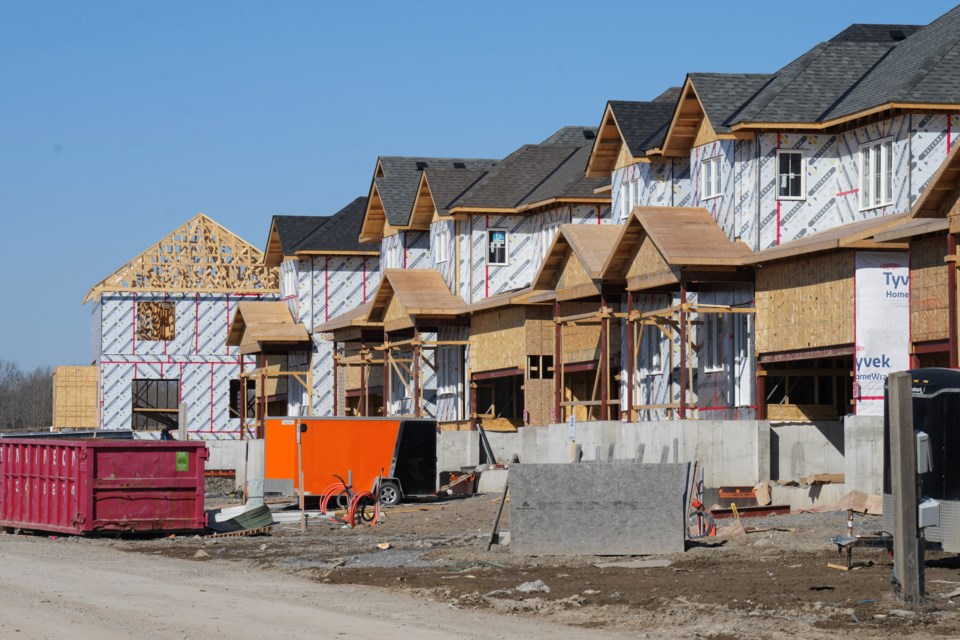Ontario needs to increase its housing starts by more than 130,000 annually in order to return to pre-pandemic affordability levels, according to a new report released by the Canada Mortgage and Housing Corporation (CMHC).
The latest supply gaps estimate report, released Thursday, found that overall Canada would need to double the current pace of home construction to return to housing affordability levels last seen in 2019.
This means that housing starts would need to sit between 430,000 and 480,000 per year over the next decade.
“Doubling the pace of housing construction in Canada is achievable, but not without a significantly larger and modernized workforce, more private investment, less regulation, fewer delays, and lower development costs,” said CMHC deputy chief economist Aled ab Iorwerth in a statement.
“It will also require significant innovation in construction technology and growth in labour productivity.”
The report says the provinces with the most significant housing supply gaps are Ontario and Nova Scotia, due in part to rising housing costs during the pandemic.
In Ontario, in order to reach the level of affordability seen in 2019, the province would need 226,698 housing starts annually, equalling about 2.2 million homes over 10 years.
A “business-as-usual” pace for Ontario projects annual housing starts to sit at about 92,478.
In Toronto alone, the CMHC estimates a 70 per cent increase in homebuilding over the next decade is needed to tackle affordability issues.
A spokesperson for Housing Minister Rob Flack said that while the province has made progress on their commitment to build more homes, it faces “challenges beyond our control — global economic uncertainties, supply chain disruptions, and with President (Donald) Trump’s tariffs and tariff threat.”
Ontario’s 2025 budget reported the province saw 74,600 housing starts in 2024, with a projected 71,800 this year. The government needs to achieve about 150,000 new homes per year to reach the goal of building 1.5 million homes — a goal recommended by the Ontario Housing Affordability Task Force in 2022.
Officials say the government has no plans to revise its target.
On Thursday, the agency said that a 2030 timeline was “no longer realistic” to close the supply gap due to the post-pandemic surge in the housing market and the length of time it takes for development to be approved.
“COVID-19 significantly changed the affordability landscape across the country. In particular, Toronto and Vancouver face more structural affordability challenges that require more time to address,” the report said.
“This change also highlights how widespread the housing affordability challenge has become across Canada.”
NDP housing critic Catherine McKenny said the CMHC report shows that neither Ontario nor the federal government have taken the necessary steps to increase housing supply and affordability.
“This is alarming given the growing housing crisis we are in as well as the lost jobs and productivity in the housing labour market,” she said, adding that Ontario is nowhere close to meeting their target of 1.5 million new homes.
“Ontario needs homes and it needs to protect jobs. This government continues to show that neither is a priority for them.”
The report follows an economic update from the Ontario Financial Accountability Office released last week, which found the province’s housing starts in the first quarter of 2025 were the lowest of any quarter since 2009, totalling 12,700 units — a 20.2 per cent drop from the previous quarter.




.png;w=120;h=80;mode=crop)